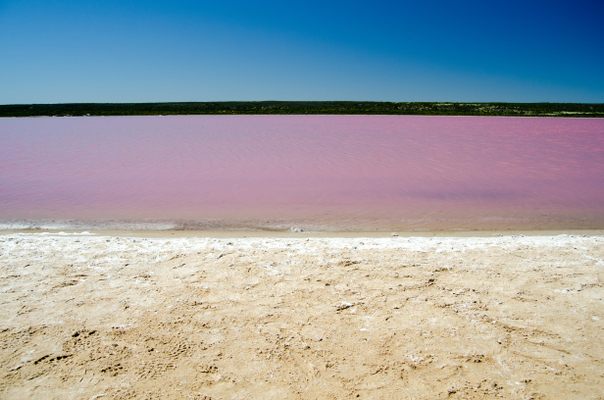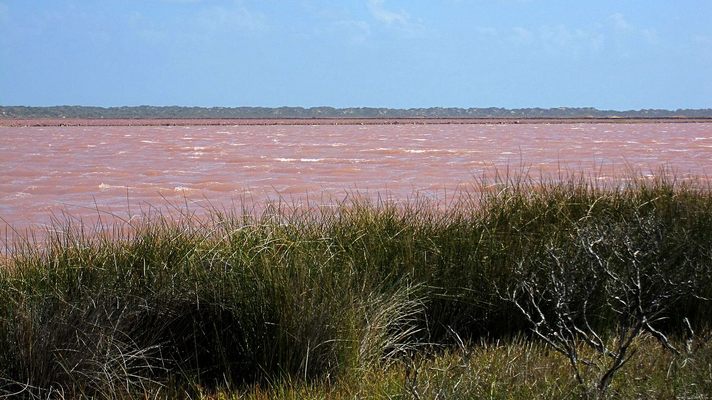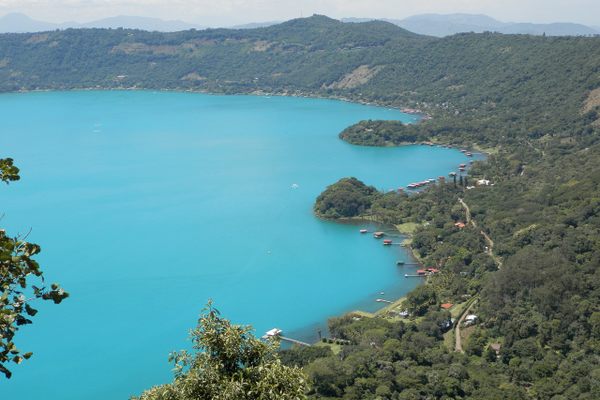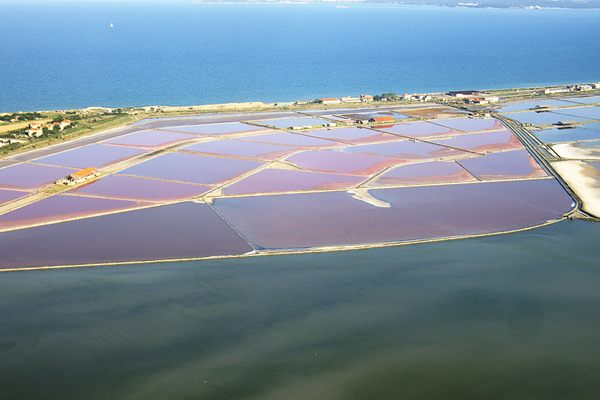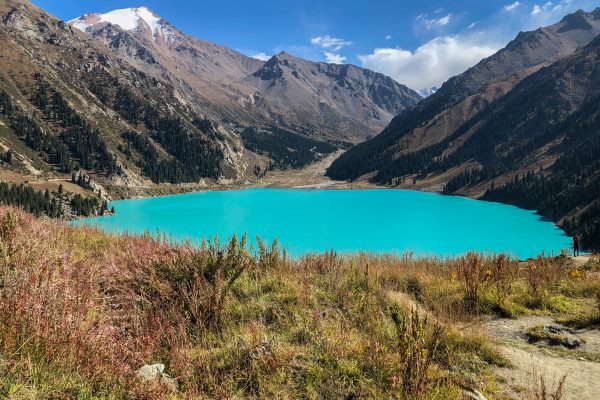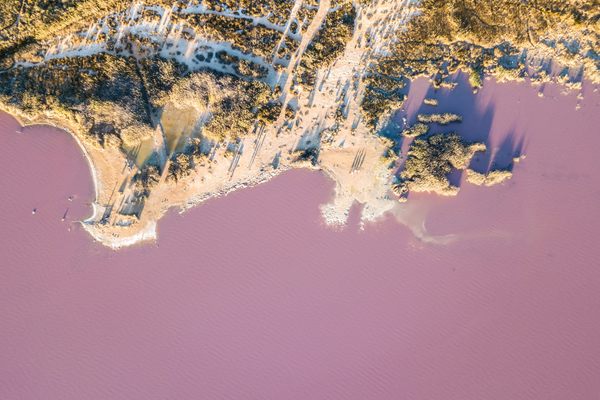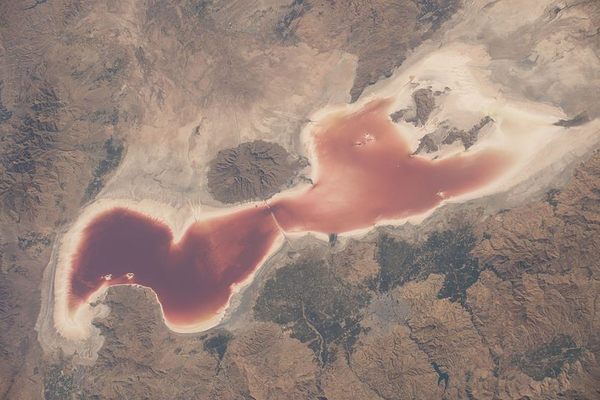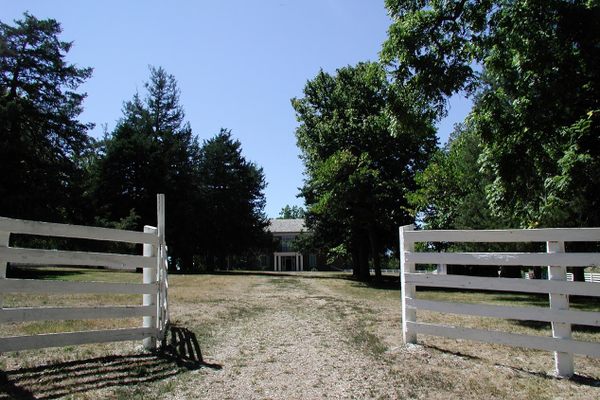About
Hutt Lagoon in Western Australia is pink. It’s also a very particular kind of farm.
This 70-square-kilometer salt lake is located north of the mouth of the Hutt River. (The Principality of Hutt River, the oldest micronation in Australia, is also in these parts and claims to have been an independent sovereign state since 1970. But that’s another story.) Due to the lagoon’s position below sea level, seawater seeps into it year round through a beach barrier ridge, while freshwater comes in from nearby springs. The high evaporation rate is unable to balance the incursion of salt, making Hutt Lagoon an incredibly saline environment.
The kind of organisms best suited to salt evaporation ponds are algaes with high concentrations of beta-carotene, which protects them against the intense light. Beta-carotene is used commercially by humans as a food-coloring agent and source of Vitamin A, making Hutt Lagoon an attractive algae-farming site.
The lake currently contains the world’s largest microalgae production plant, sized at around 620 acres. From above, it looks like a patchwork quilt, as artificial ponds ranging in color from bright pink to copper red develop different kinds of carotenoid algaes in varying concentrations.
Related Tags
Community Contributors
Added By
Published
October 20, 2015
Sources
- https://en.wikipedia.org/wiki/Hutt_Lagoon
- http://www.amusingplanet.com/2013/05/farming-algae-in-hutt-lagoon-western.html
- https://en.wikipedia.org/wiki/Principality_of_Hutt_River
- http://www.dailymail.co.uk/news/article-2332610/Australias-beautiful-bright-pink-farms-producing-ALGAE-end-vitamin-pills--ice-cream.html

